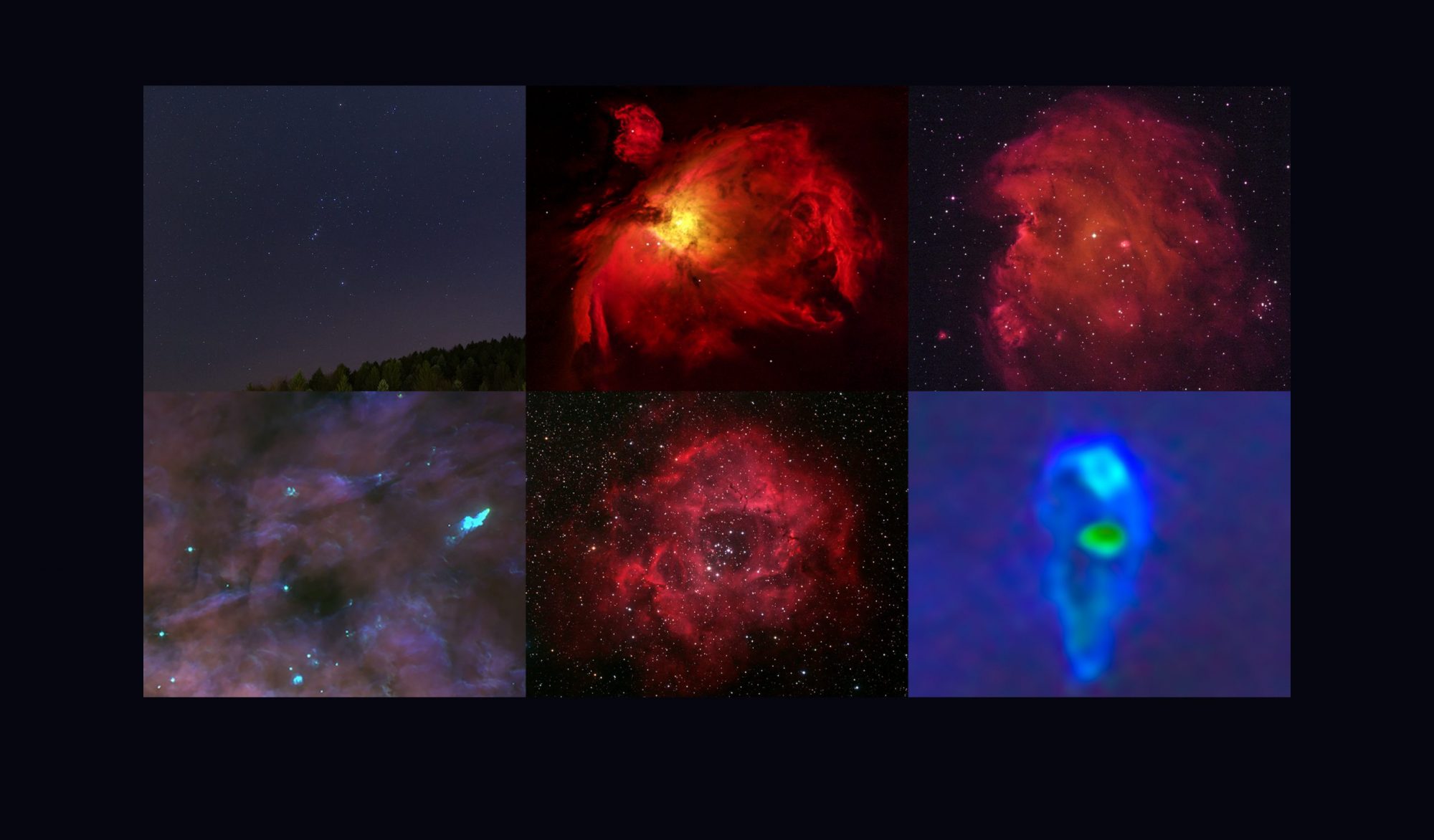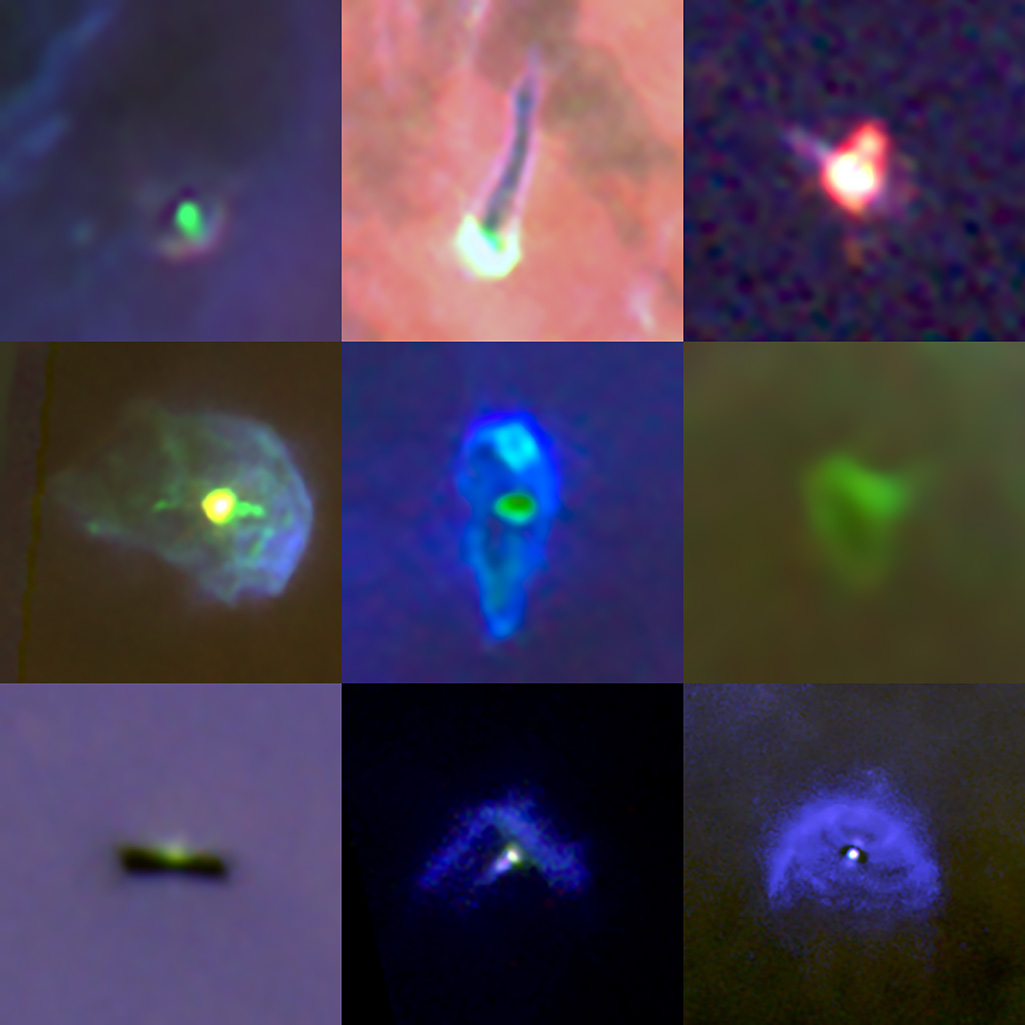
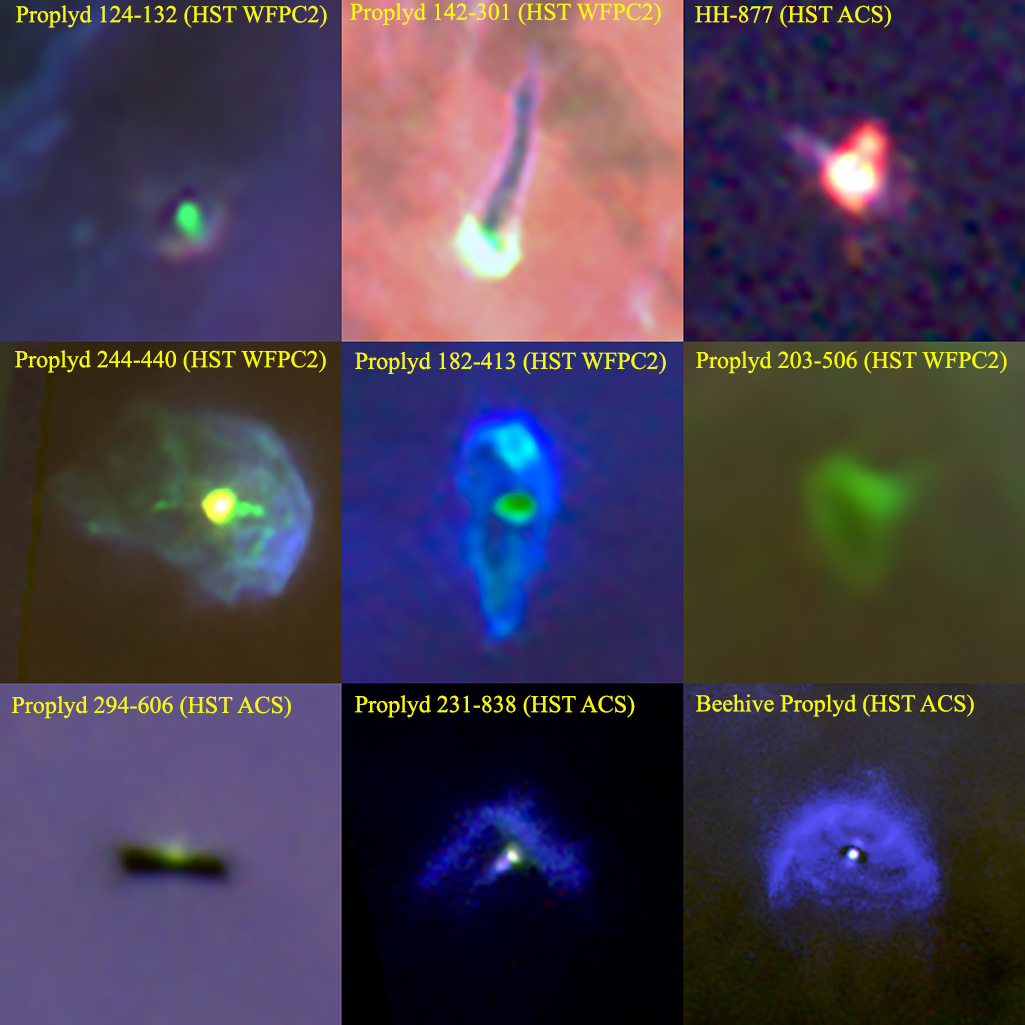
Gallery of Orion proplyds. Based on observations made with the NASA/ESA Hubble Space Telescope, and obtained from the Hubble Legacy Archive, which is a collaboration between the Space Telescope Science Institute (STSCI, NASA), the Space Telescope European Coordinating Facility (ST-ECF/ESA) and the Canadian Astronomy Data Centre (CADC/NRC/CSA).
Königsberg in the year 1755. The German philosopher and scientist Immanuel Kant is working on his book “Allgemeine Naturgeschichte und Theorie des Himmels” (“Universal Natural History and Theory of the Heavens”). In 1755 six planets were known. These six planets are rotating in the same direction around the sun. Their orbits are approximately circular and nearly exactly coplanar. Based on these facts Immanuel Kant concluded that the planets must have formed in a gaseous disk around the young sun.
Two hundred and forty years later the Hubble Space Telescope detected more than 150 young, sun like stars in the Orion Nebula. These stars have disks formed by gas and dust particles. Many of the disks could be spatially resolved by the telescope for the first time. Most disks are photo-evaporated by the intense, energetic radiation of nearby ultraluminous young stars. Bob O’Dell, one of the leading Orion Nebula experts, coined the name “proplyd” (PROtoPLanetarY Disk) for these objects. The Hubble Space Telescope thus proved that Immanuel Kant’s hypothesis was correct.
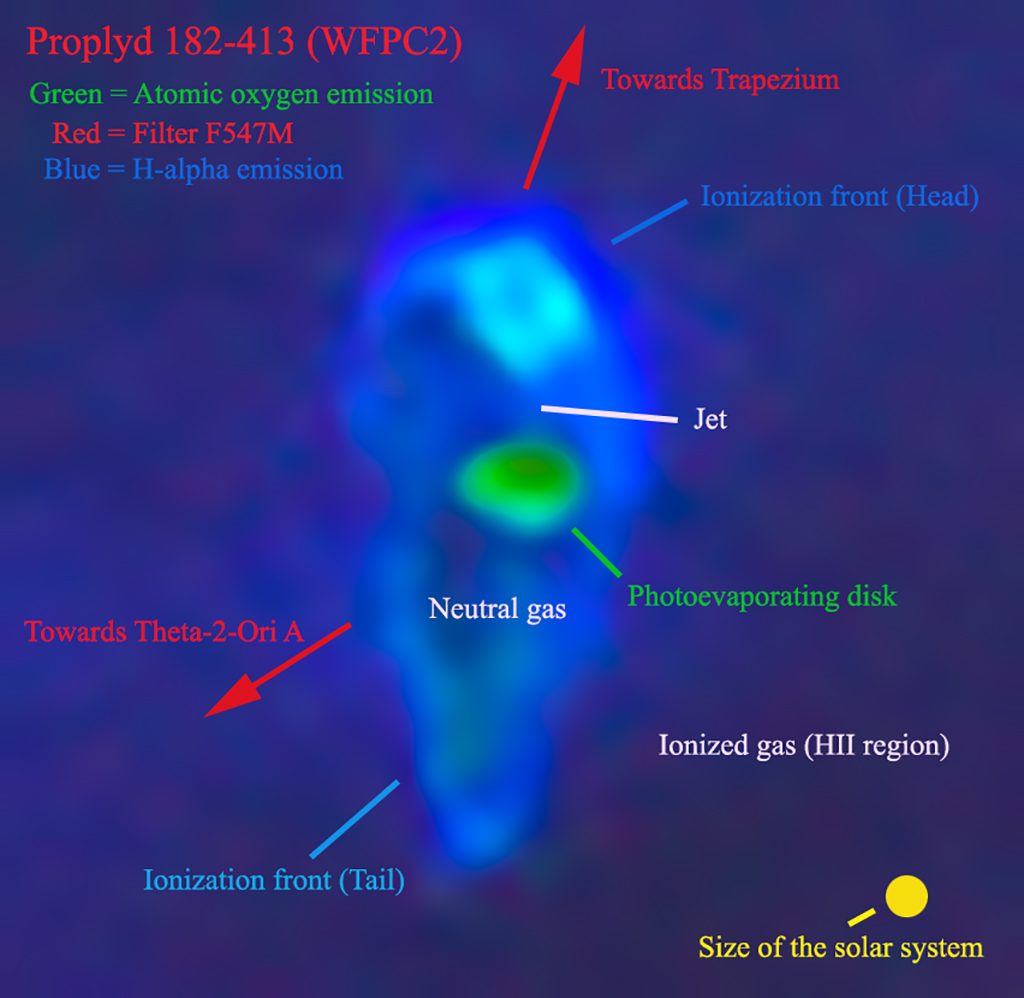
The proplyd 182-413 observed with the Hubble Space Telescope Wide Field Planetary Camera-2. Based on observations made with the NASA/ESA Hubble Space Telescope and obtained from the Hubble Legacy Archive, which is a collaboration between the Space Telescope Science Institute (STSCI, NASA), the Space Telescope European Coordinating Facility (ST-ECF/ESA) and the Canadian Astronomy Data Centre (CADC/NRC/CSA).
One of the best studied proplyds is 182-413 (the naming of the proplyds is based on the coordinates in right ascension and declination). In the SIMBAD astronomical database the prefix [OW94] (for O’Dell and Wen 1994) is used for the proplyd names. Thus proplyd 182-413 can be found under [OW94] 182-413 in the database.
In the picture above the disk is seen in green which corresponds to the Hubble Space Telescope filter for an emission line of atomic oxygen ([OI] 6300nm emission line). The blue color corresponds to H-alpha emission and traces an ionization front. We can see here structures which have the size of our own solar system! In the center of the disk is a young star that has a mass somewhat smaller than our sun. This star can however not be seen directly in the picture above.
The energetic radiation coming from the two O-type stars Theta-1-Ori C and Theta-2-Ori A initiates a neutral, photo-evaporative flow at the disk surface. This neutral, flowing gas is ionized at a certain standoff distance and forms a bright ionization front. In many proplyds this ionization front has a cometary appearance pointing away from the exciting star. The ionization front is mainly emitting H-alpha photons (blue color in the picture).
It this surprising that the central disk has this intense green color which means intense radiation in the oxygen emission line is produced at the disk surface. The solution of this riddle is that the radiation is produced non-thermally by the destruction of hydroxyl (OH) molecules. This molecule is very abundant at the disk surface and if the molecule is destroyed by radiation from the nearby O-type stars, the resulting free oxygen atoms will emit photons which produce the green color of the disk.
The proplyd 182-413 is asymmetric. The most likely explanation is that the proplyd is photo-evaporated by the two O-type stars Theta-1-Ori C and by Theta-2-Ori A. This directly proves that both stars are inside the Orion HII region and that both stars shape the structure of the Orion Nebula. It also makes it possible to determine the distance between the two stars Theta-1-Ori C and Theta-2-Ori A.
Inside the proplyds new planets may form. Proplyds are thus ideal laboratories to study the process of star and planet formation.
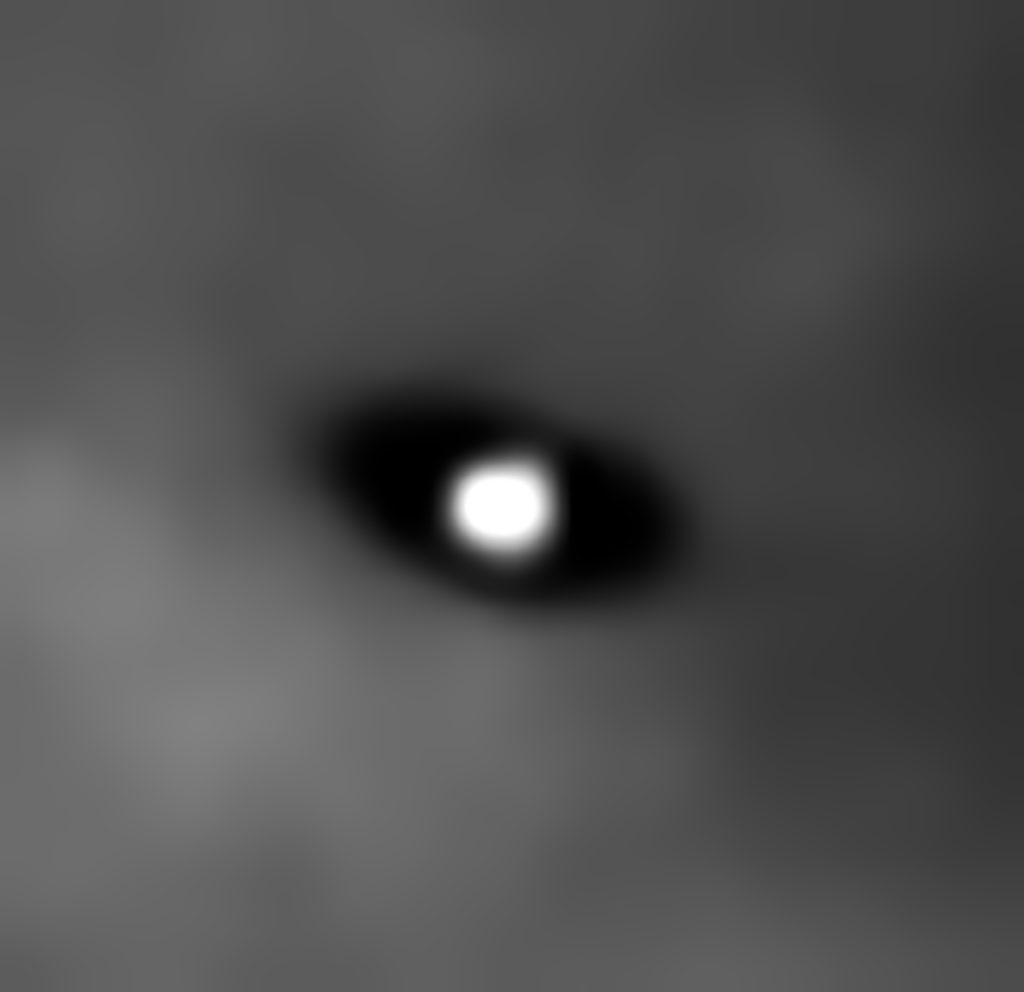
Example for a pure silhouette disk (proplyd 218-354) observed with the Wide Field Planetary Camera-2. Based on observations made with the NASA/ESA Hubble Space Telescope and obtained from the Hubble Legacy Archive, which is a collaboration between the Space Telescope Science Institute (STSCI, NASA), the Space Telescope European Coordinating Facility (ST-ECF/ESA) and the Canadian Astronomy Data Centre (CADC/NRC/CSA).
Several proplyds are seen in silhouette against the bright background nebula. Here the distance to Theta-1-Ori C or Theta-2-Ori A is relatively large and the radiation coming from these two stars is not intense enough to start a neutral, photo-evaporative flow as for example in the case of 182-413. These objects are called pure silhouette disks.
